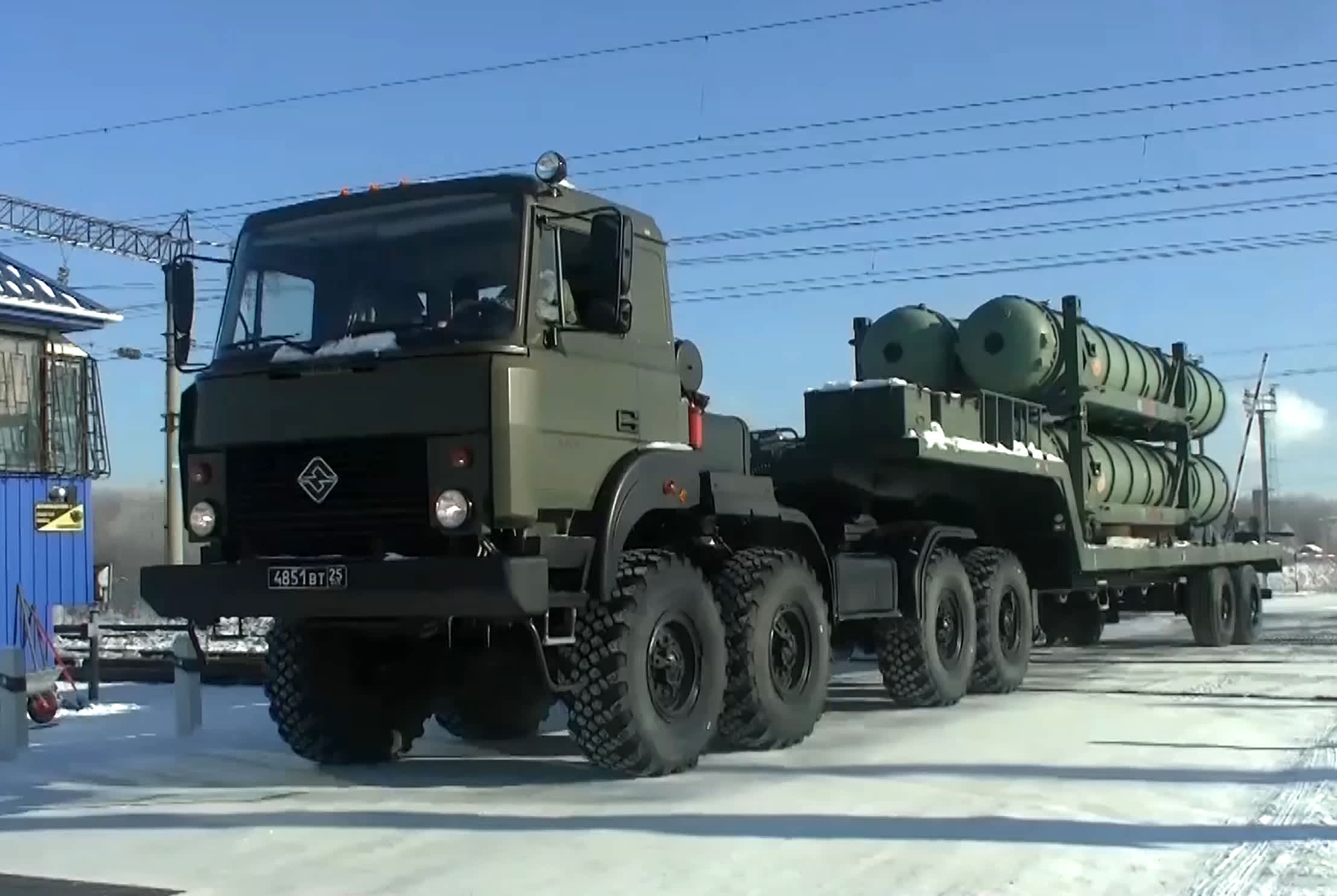
An Ural-5323 off-road truck with a battalion of S-400 Triumf anti-aircraft missile systems redeploys from Russia’s Khabarovsk Territory to Belarus to take part in a joint military exercise held by the Union State of Russia and Belarus and aiming to simulate repelling an external attack on its border, cutting possible supply lines for invaders as well as detecting, containing and eliminating their combat as well as subversive and reconnaissance units.
Russian Defence Ministry | TASS | Getty Images
The stand-off between Russia and the West over Ukraine sent Russian assets tumbling on Monday.
As of Monday afternoon in Europe, the MOEX Russia Index had dropped around 5.9% and is now down more than 15% year-to-date. The Russian RTS Index was down 8.1% on the day and around 19% lower so far in 2022.
The Russian ruble was down 2.5% against the dollar at 79.17, its lowest since late 2020.
Russian assets have been mired in volatility in recent weeks after a build-up of around 100,000 Russian troops along the Ukrainian border sparked fears from Western powers that Moscow was planning an invasion, an allegation the Kremlin has persistently denied.
Both the U.S. and U.K. over the weekend threatened severe economic sanctions in the event of any incursion into Ukraine by Russian forces. Both countries have withdrawn diplomatic staff from their embassies in Kyiv.
Anders Aslund, senior fellow at the Atlantic Council and chairman of the International Advisory Council at the Center for Social and Economic Research, tweeted Friday that Russian assets could fall further.
“So far, the Russian RTS stock index in USD has only fallen 27% from its high point on October 27 before Putin started threatening Ukraine,” Aslund said.
“It has far more to fall. In 2008, it fell by 80% from May to October (Georgia war + global financial crisis). Putin could not care less.”
Agathe Demarais, global forecasting director at The Economist Intelligence Unit, told CNBC on Monday that the threat of U.S. financial sanctions being imposed on Russia was almost moot since they would be far less effective than after Russia’s annexation of Crimea in 2014.
“Over the past eight years, the Kremlin has made self-sufficiency a top economic priority: foreign-exchange reserves are high and not denominated in US dollars, sovereign debt is very low and held by domestic investors, and Russia has developed alternative financial channels that bypass Western ones,” she said.
“This does not mean that sanctions would not weaken the Russian economy. However, the Kremlin sees these as an opportunity to continue to insulate the Russian economy, for the very long term, against sanctioning states.”
She noted that other sanctioned countries, such as Iran and China, have taken similar steps in recent years.
“In addition, the U.S. knows that sanctioning Russia would come at a high price for the global economy, too, if it sent global oil prices to sky-high levels,” Demarais added.




